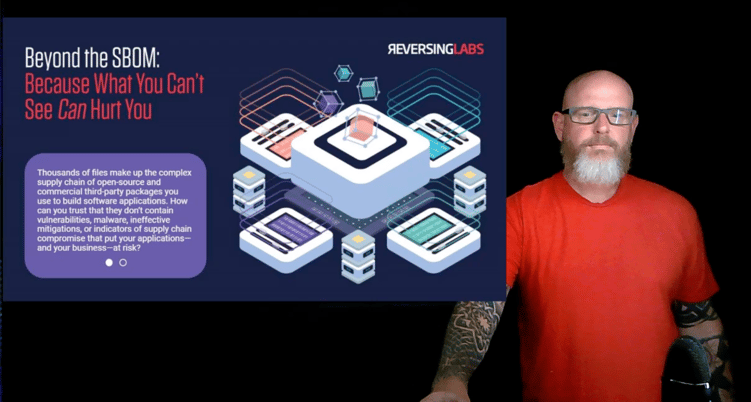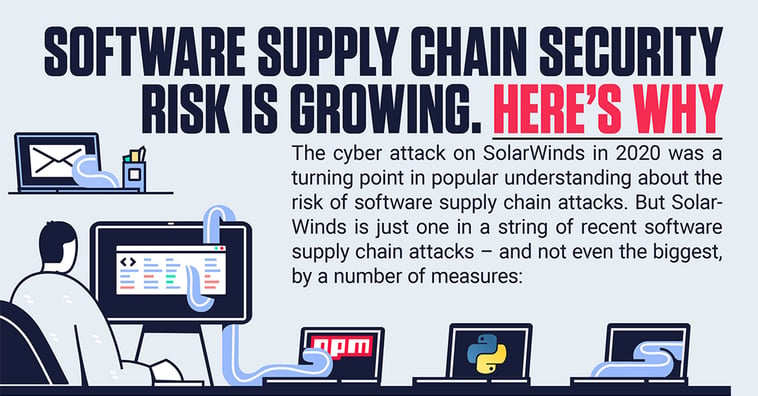Resources
Blog Report
Video

Forrester Security & Risk talk: Go beyond the SBOM for supply chain security
Learn moreDemo

Software assurance — A proactive and holistic approach to ensuring software applications' security, quality, and reliability. Software assurance encompasses various activities and methodologies designed to identify vulnerabilities, improve code quality, and mitigate potential threats before malicious actors can exploit them. Software assurance aims to create a fortified software environment through continuous monitoring, testing, and improvement.
Organizations face escalating cybersecurity threats, making software assurance necessary. It goes beyond reactive measures, such as patching vulnerabilities after they're discovered, to focus on preventing vulnerabilities from arising in the first place. By implementing software-assurance practices, organizations can significantly reduce the risk of breaches, data leaks, and downtime, ultimately safeguarding their reputation and bottom line.
Static analysis: Involves examining the source code or binaries of software without execution. Static analysis tools identify potential vulnerabilities and coding errors, helping developers rectify issues before deployment.
Dynamic analysis: This technique involves analyzing software during runtime. Dynamic analysis tools assess how the software behaves under various conditions, uncovering vulnerabilities that are not apparent through static analysis alone.
Penetration testing: Also known as ethical hacking, penetration testing involves simulating real-world cyberattacks to identify vulnerabilities that malicious hackers could exploit.
Code review: Involves manual inspection of source code to identify design flaws, security vulnerabilities, and areas where coding best practices can be improved.
Enhanced security: Software assurance teams proactively identify and address vulnerabilities, reducing the risk of cyberattacks and data breaches.
Reduced costs: Early detection and resolution of vulnerabilities result in cost savings by avoiding potential legal liabilities, lost business, and expensive post-attack recovery efforts.
Compliance: Many industries have regulatory requirements for software security. A software assurance team ensures compliance with these standards, preventing legal and financial penalties.
Brand reputation: Robust security practices enhance a company's reputation for reliability and trustworthiness, fostering customer loyalty and attracting new clients.
Embracing software assurance involves a strategic interplay of various practices, each aimed at fortifying your software against potential vulnerabilities and attacks. Joining together several software-assurance practices will create a formidable defense mechanism.
Continuous testing: Software assurance emphasizes the importance of continuous testing throughout the software development lifecycle. By consistently examining each component for potential weaknesses, vulnerabilities can be prevented and addressed as they arise. This ensures that the software remains robust and secure against potential threats, allowing developers to manage cybersecurity risks proactively.
Secure coding training: Security starts with the code in software development. Secure coding practices provide a strong defense against threats. Training in these practices equips developers with the knowledge to write code that is both functional and resilient to vulnerabilities. By understanding common errors and best practices, developers can produce firm code against potential attacks.
Automated security scanning: In the fast-paced world of software development, automated security scanning offers a rapid and accurate method for identifying vulnerabilities in code. These tools swiftly pinpoint issues, enabling timely fixes by developers. By catching vulnerabilities early with this automation, organizations can preemptively address potential exploits by malicious actors.
Threat modeling: Threat modeling is a proactive approach at the intersection of software architecture and security. Before coding begins, it identifies potential vulnerabilities and threats. In the design phase, it considers possible attack vectors, predicts worst-case scenarios, and integrates security measures to ensure a resilient software structure.
Financial services: Banks and other financial institutions rely on secure transaction software and client data protection. Software assurance ensures the integrity of these critical systems.
Healthcare: Medical applications and electronic health records are prime targets for cybercriminals. Software assurance safeguards sensitive patient information.
IoT devices: Internet of Things devices often lack robust security measures. Software assurance can prevent unauthorized access and potential control of these devices.
E-commerce platforms: E-commerce platforms need robust security to protect customer data and financial transactions.
Software assurance is an indispensable practice in the modern digital landscape. By adopting proactive security measures, organizations can ensure the integrity of their software, protect sensitive data, and fortify their reputation against ever-evolving cyberthreats.
For further insights into software assurance and its implications, explore the following articles:


